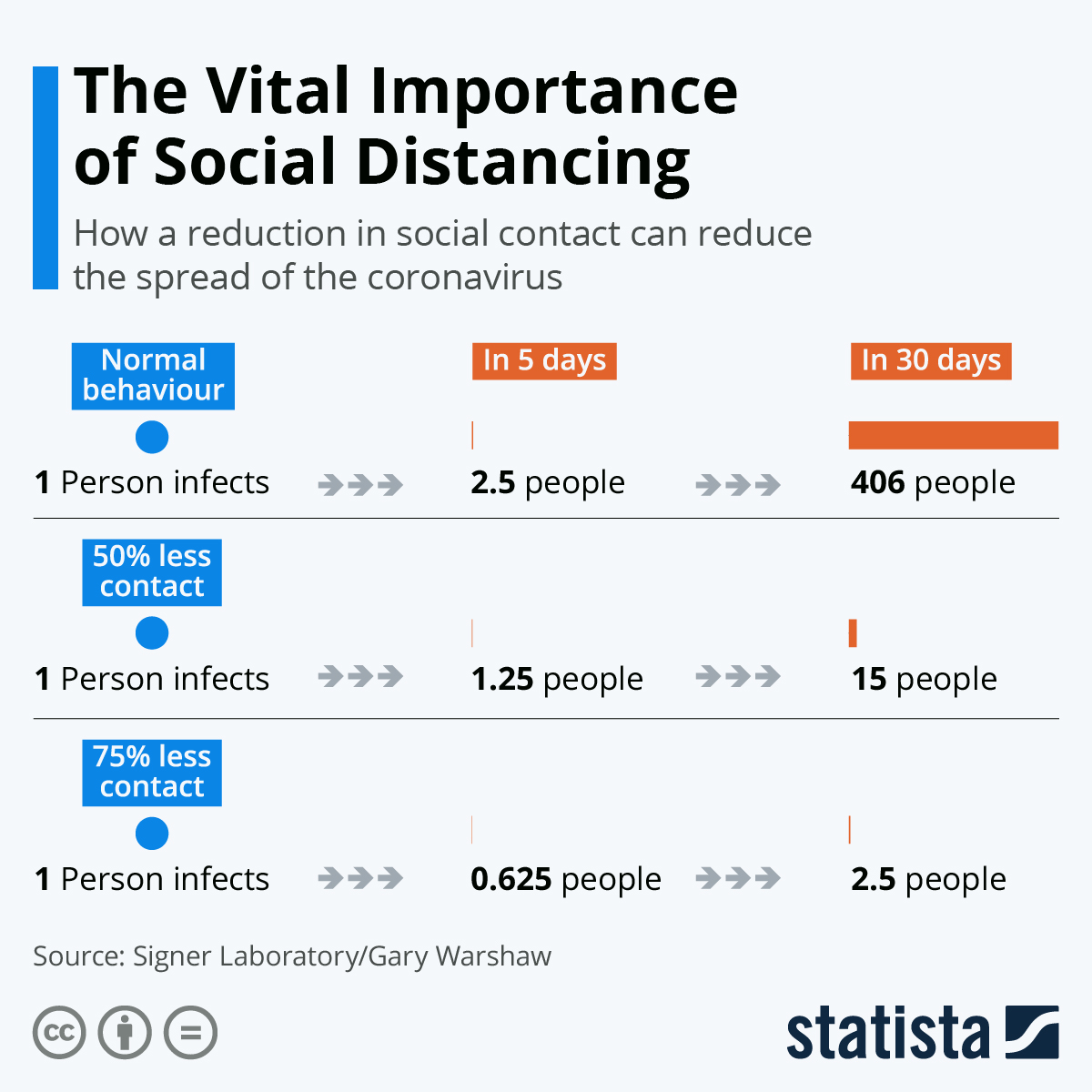How Business Owners Can Connect While Staying Socially Distant
Business owners know that running a successful organization relies on having excellent relationships with clients, employees, suppliers, partners and more. So with the recent developments regarding the coronavirus/COVID-19 pandemic across the world, how do you properly practice social distancing while still running a business? How do you maintain and build on connections with others? We've got some tips and advice for how to stay connected while staying socially distant.
Follow Proper Advice on Social Distancing to Protect Yourself and Others
You need to start by understanding and following the social distancing guidelines that are in place. Look at official guidance from the Centers for Disease Control (CDC) in the U.S. and the World Health Organization (WHO). You should also examine advice from local and state governments and any requirements they have put in place, like shelter at home or other directives.
As you’re reviewing the guidance, think about:
- How does this impact the funding, function and operations of your business, and what changes will you need to make?
- Will your business need to close, and if so, what does that mean for employees and customers?
- Do you have enough of a cash buffer in the business to pay expenses, and if not, what financial assistance is available?
- What are your plans for business recovery once the crisis has passed?
It’s important to review only reputable sources and nationally recognized, trusted media. For a business owner, social distancing helps to protect you, your employees, customers and anyone else you come into face-to-face contact with. Ensure that you understand and implement the guidelines.
You will find more infographics at Statista
Set Expectations with Clients, Employees, Suppliers and Others
To properly socially distance, it’s important to let everyone know how things are changing and what the impact will mean to them.
- Employees: Let them know if you need to temporarily lay them off, or if they can work from home. Clearly explain their options and be available to answer questions.
- Clients: If your business is going to be closing or changing, get in contact with your clients to tell them what the impact will be (for example, if you’re a traditional retailer moving to online-only ordering and delivery).
- Suppliers: Get in contact with the organizations that supply your business and explain your situation. If you’re going to hold off or change your ordering patterns, let them know as early as possible.
- Others: You may well have other key business relationships. Approach each one on a unique basis and let them know what’s happening with your business and what they will need to do as a result.
Ask How People Want to Be Communicated With
Everyone has different communication preferences. Some may want to video chat with you, while others will be happy with an email. Managing your employees can be done through a phone call, Slack channel or project management software, depending on the support they need.
The important thing is to make communication as easy as possible. Changes in business are difficult at the best of times, and you don’t want communication difficulties to add more frustration and stress. Be clear in your messaging, and understand that everyone is going through a tough time. This is an opportunity to share good leadership and patience by setting an example.

Manage Expectations for Meetings and Appointments
In difficult times, people rely on predictability and stability to stay safe and secure. This means you’ll need to state clearly what your expectations are and what you need from others.
One of the best ways to do this is by creating a clear schedule and setting up regular meetings with employees and appointments with clients. This will help everyone keep things front of mind and shows your dedication to keeping your operations and commitments as normal as possible.
Make Time for Chat
We’re not wired to work all the time, and it’s easy to be distracted when things are challenging. Remember this when you’re hosting meetings or appointments, and set aside time to just chat with employees or customers. Ask how people are doing and be empathetic towards their situation. This is a great time to build rapport and trust between the people you interact with.
Invest in Good Hardware and Software
If you want to meet with employees, customers or others online, then a great webcam and headset is essential. Don’t be tempted to go with the webcam or microphone that’s built into your computer. The quality isn’t normally very good, and this is a time to be projecting yourself in the best possible way.
Investigate reviews of webcams and choose one that’s easily adjustable and has good resolution. For a microphone, it’s often a good idea to get a headset that combines headphones and a microphone.
You should also explore video conferencing software options before you need it, so you’re not struggling with the interface during a meeting. Solutions like Skype, Zoom or Google Hangouts are great places to start.

Maintain a Professional Office Environment
If you’re going to be video conferencing, you need to have a professional image. That means checking the background behind you for when you’re on screen and dressing in a way appropriate to your position. Let your family know they shouldn’t interrupt you during the times you’re on calls or video conferences.
Take Care of Your Physical and Mental Health
Social distancing and isolation, while necessary, create their own challenges. If you’re not used to working from home or being alone, it’s important to understand how it might impact you and to take steps to protect and maintain your mental and physical health.

Get Proper Boundaries in Place
When working from home or remotely, make sure you can work in a quiet environment and that you create proper boundaries for when you’re at work and when you’re not. Even in difficult times, it’s important to switch off. It’s not just good for you, it’s also important to your loved ones.
Loneliness and Isolation Are to Be Expected
Dealing with loneliness and a sense of disconnection is normal if you’re working from home. It’s important to understand these are common feelings and that there are several things you can do:
- Connect with friends and family through video conferencing and other methods. It helps you maintain human contact. It’s not all work, all the time.
- If it’s appropriate, share your thoughts and feelings about how you're doing online or over virtual chat.
- If you have feelings that are difficult, get in contact with your doctor or a licensed therapist. Arrange for a virtual meeting so you can maintain social distancing.
Take Breaks and Get Out of the House
You will need to unplug and step away from the computer and your work occasionally. Take the time to go outside for some fresh air, walk the dog or spend some time in nature.
Get Regular Exercise
Good physical health promotes good mental health. If you have home exercise equipment, that’s a great place to start. You can also look up strength and cardio exercises that you can do at home. If you decide to go outside to walk or exercise, always follow social distancing guidelines.
Get Proper Nutrition and Sleep
Fruits, vegetables, grains and other whole foods are great for you. You might want to batch-prepare meals ahead of time to make your daily cooking easier. Sleep is vital too, so maintain good sleep hygiene, go to bed at the same time each day and try to get a minimum of seven hours.
This post was written in late March 2020 as a result of social distancing requirements due to the coronavirus pandemic, but the advice applies any time you need to socially distance yourself and others. Remember to always follow health guidelines from official sources. This information is not intended to provide medical or other advice.




 How Business Owners Can Connect While Staying Socially Distant
How Business Owners Can Connect While Staying Socially Distant  Tiểu sử chiến binh nặng ký tại giải Ngoại Hạng Anh - Fulham FC
Tiểu sử chiến binh nặng ký tại giải Ngoại Hạng Anh - Fulham FC  Vinicius Junior- Hành trình chinh phục sân cỏ của chàng thơ Brazil
Vinicius Junior- Hành trình chinh phục sân cỏ của chàng thơ Brazil 